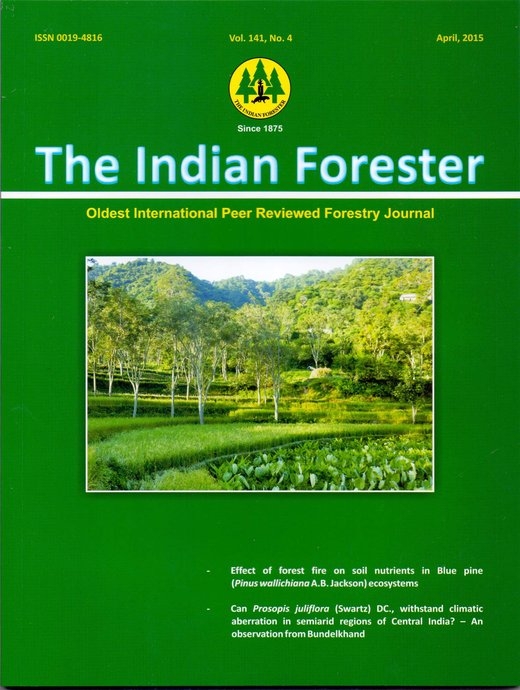Survey Report on Hosts and Haustoria of Helicanthus elastica (Desr.) Danser in Udupi and Dakshina Kannada District of Karnataka and Kasaragod District of Kerala, India - A Concise Review Plus Some New Additions
DOI:
https://doi.org/10.36808/if/2015/v141i4/68928Keywords:
Haustorium, Host, Loranthaceae, Mango Mistletoe.Abstract
Plants of Loranthaceae and Viscaceae are the major type of hemiparasites on aerial parts of many trees and shrubs. Mistletoes can infect taxonomically unrelated hosts and their attack has been proved to be fatal to various trees and shrubs. Plant exploration trips were conducted to different selected adjacent districts of Kerala and Karnataka to collect the plant specimens belonging to Loranthaceae. Both the host and the parasites collected were identified, mainly by using different Floras. A total of forty six plant species have been recorded as host plant for Helicanthus elastica. Out of them, twenty seven hosts were recorded in the region during this study. Out of twenty seven, fifteen host species were investigated to be new hosts for H. elastica. Coiling, knotting, coupling, creeping and the haustorial roots infecting the mother plant have been recorded. The mistletoe is found to be very common on Mangifera indica and hence recommended to be named as 'mango mistletoe'. A concise list of host records for this medicinal plant will be a ready reference for phyto-pharmaceutical academia and industry taking up the job of quality assessment of this mistletoe with reference to different host species.References
Cooke TCIE (1967). The Flora of the Presidency of Bombay(II Reprinted edition) I-III Botanical Survey of India, Calcutta, p.38-42
Docteres Van Leeuwen (1954). On the biology of some Javanese Loranthaceae and the role of birds play in their life-history. Beaufortia, 4 (41): 105-207.
Gamble J.S. (1967). The Flora of the Presidency of Madras (II Reprinted edition) I-III. Botanical Survey of India, Calcutta, p.873-878
Gill L.S. and Hawksworth F.G. (1961). The Mistletoes. A literature review. Technical bulletin No.1242. United States. Department of Agriculture, Washington DC.
Indrani N. and Balasubhramanian K. (1985). Chemical examination of Dendrophthoe falcata growing on Terminalia tomentosa. Leather sci., 32: 206
Jain S.K. and Rao R.R. (1977). A Handbook of field and herbarium methods. Today and Tomorrow's Printers and Publishers, New Delhi.
Kuijt J. (1969). The Biology of Parasitic Flowering Plants. University of California Press, Berkeley and Los Angeles, p.246.
Mary K.T. and Ramadasan K. (1995). Anticancer activity of medicinal plants. Ph.D. Thesis submitted to Mahatma Gandhi Univeristy, Amala Cancer Research Centre, Thrissur.
Thriveni M.C., Shivamurthy G.R., Amruthesh K.N., Vijay C.R. and Kavitha G.R. (2010). Mistletoes and their hosts in Karnataka. J. American Sci., 6(10): 827-835.
Downloads
Downloads
Published
How to Cite
Issue
Section
License
Unless otherwise stated, copyright or similar rights in all materials presented on the site, including graphical images, are owned by Indian Forester.





